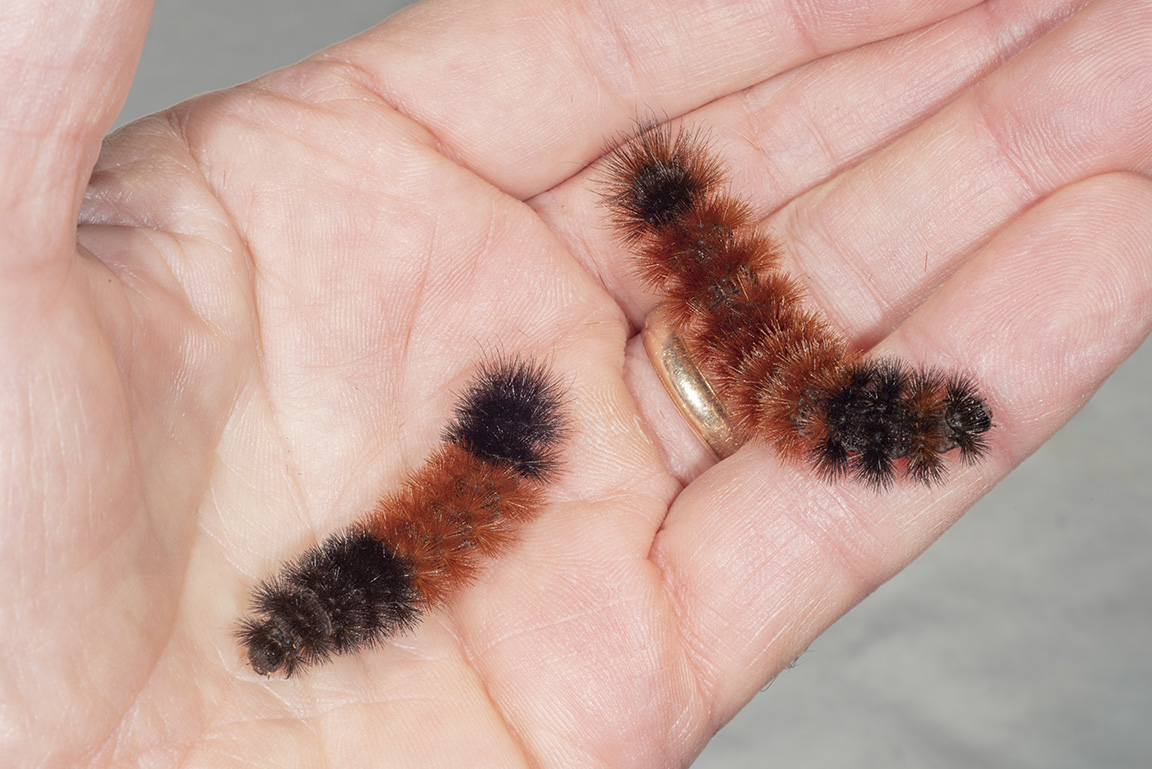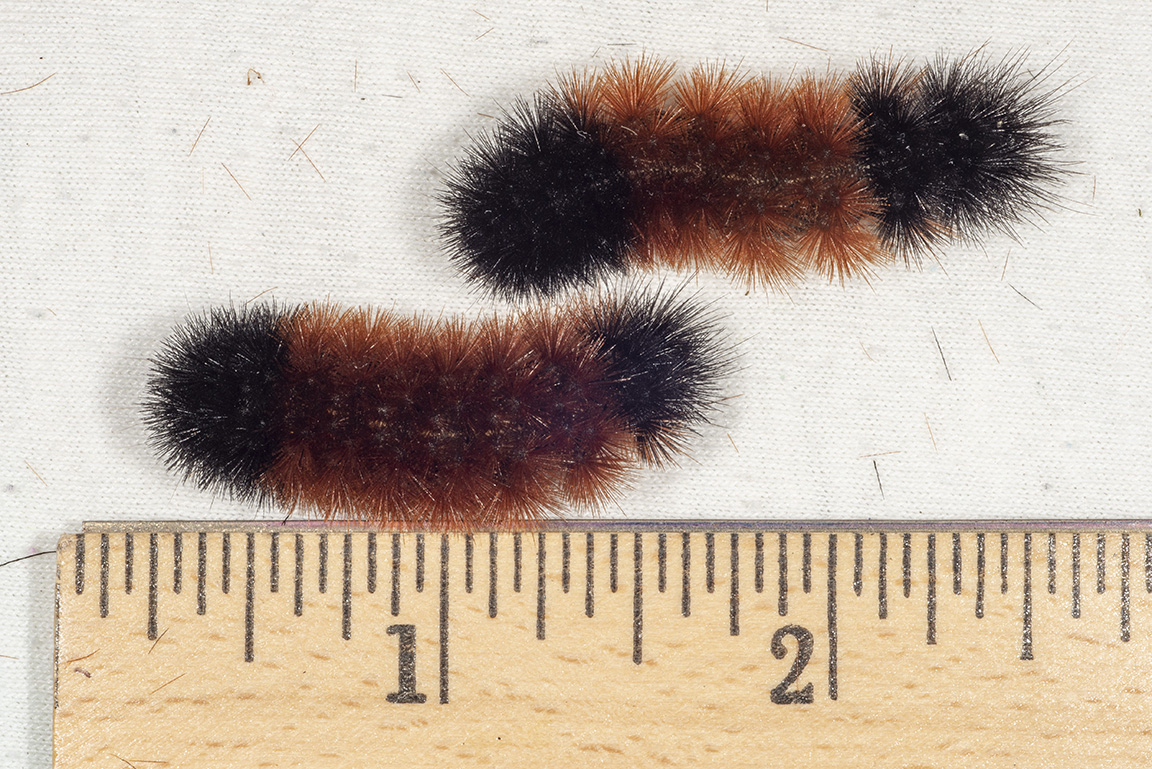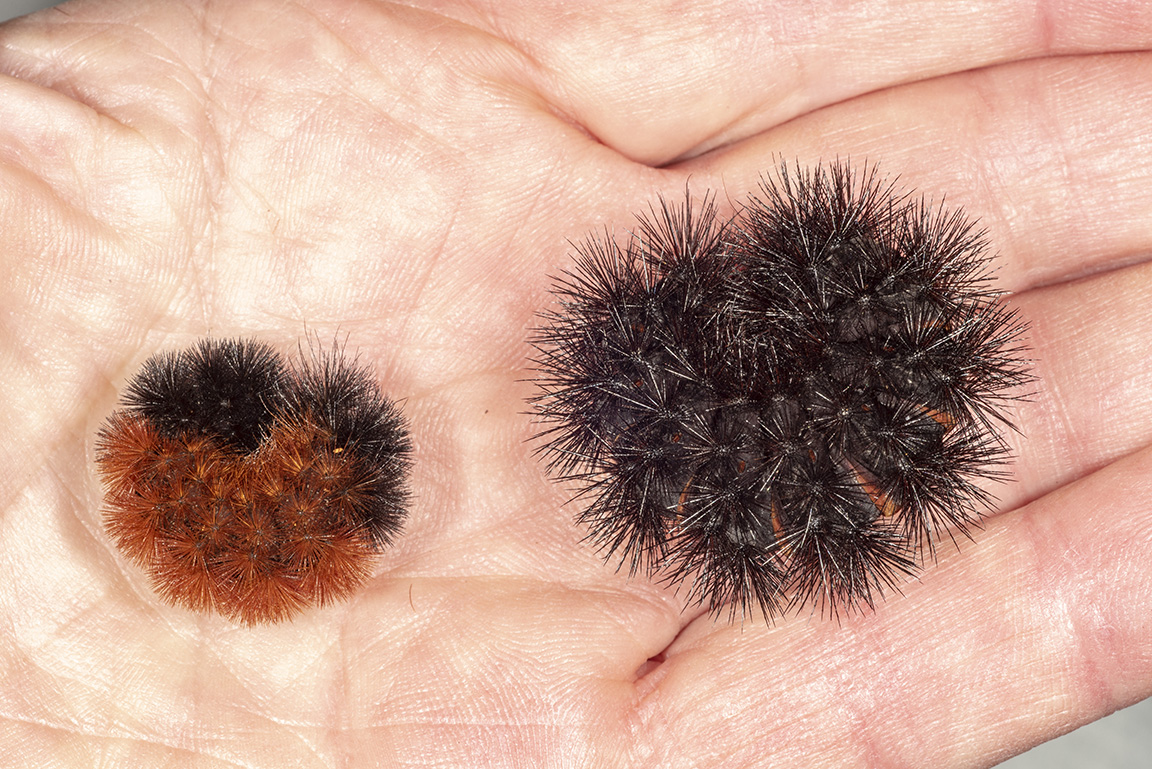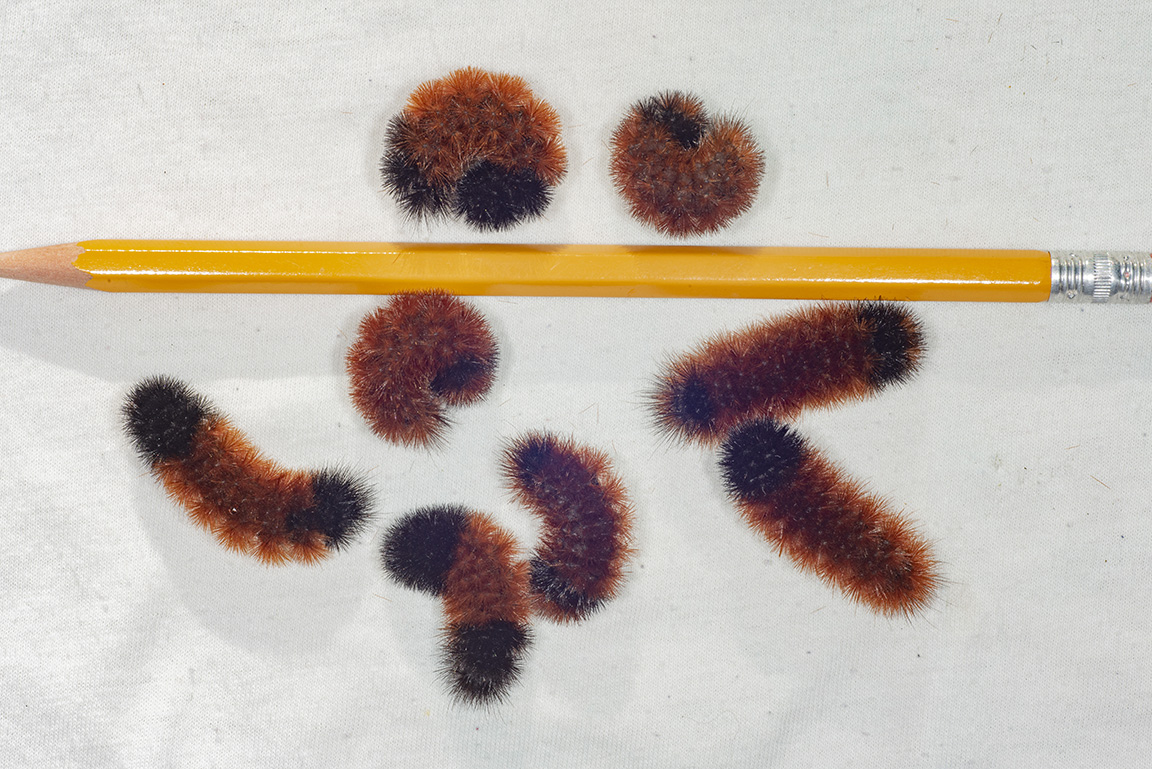While traveling a local county road this week, I was amazed at the number of woolly bear caterpillars I came across. At one particular location, they were crossing en masse from one weedy, unharvested soybean field to a grass pasture. Though I had experienced this phenomenon before, I did stop to enjoy and take some pictures! First, you’ve got to appreciate their determination, relative speed, and direct path in moving across the road. Sadly, many met their fate by car tire, never to experience the other side…paradise!? Why is the woolly bear caterpillar crossing the road…other than “to get to the other side!” The purpose, observers for many generations tell us, is to find the perfect over-wintering site, under leaf litter, fallen tree branches, rock crevices, etc. Within the last couple hundred years, they have also used our structures such as barns, outhouses, etc. Amazingly, because they are able to chemically alter their bodily fluids to much like anti-freeze, the shelter is probably more to protect them from predators, e.g., raccoons and birds, during this winter stasis.

Banded woolly bear caterpillars, Pyrrharctia isabella, are easily recognized for their brown and black coloration and gentle, fuzzy touch. (Photo Credit: John Obermeyer)

This woolly bear is determined to make it across the road, unlike his ill-fated buddy. (Photo Credit: John Obermeyer)
Folklore tells us that the woolly bear is able to predict how cold/mild the winter will be. As I write this, October 22, we are still waiting for our first frost, much less killing freeze (≤28°F) with none forecasted in the near future. Spoiler alert, because these caterpillars are seeking over-wintering harborage, they are predicting it will freeze this winter! See…they can prognosticate future temperatures!
How about the whole winter season’s temperatures? This is done by measuring the width of the brown band, the more the brown, the milder the winter, and vice versa for the black coloration. If you don’t believe me, just “Google” it, amazing what you will find! If you are going to do your own local observations and measurements for a precise forecast, you must use the correct species of woolly bear, Pyrrharctia isabella, more commonly known as the banded woolly bear, or woolly worm. Using another species of caterpillar will throw the “science” off! Below, via pictures, I will share my results, I’ll let you come to your own conclusion about this coming winter’s weather, at least for Purdue University!

What does this random sampling of banded woolly worms tell us about the coming winter? (Photo Credit: John Obermeyer)

If you use this larger, black woolly bear caterpillar (giant leopard moth) in your “data,” the winter would look ominous! (Photo Credit: John Obermeyer)



